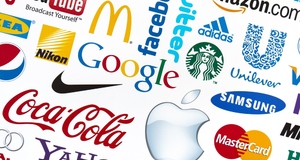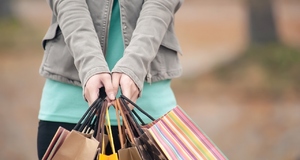From Elon Journal of Undergraduate Research in Communications VOL. 6 NO. 1Analysis of Promising Beacon Technology for ConsumersIV. Analysis of ApplicationsSince 2012, most high-end smartphones, including those manufactured by Samsung, Apple, Microsoft and Nokia, have come readily equipped with BLE technology. So it may be surprising that this technology hasn’t already become a global tech trend. Well, some individuals may argue that it has (Evans “What Technology”). Most big name early adaptors have started by trialing this technology throughout a rather small percentage of their national footprint. All but an unlikely suspect—Major League Baseball—that has placed iBeacons in 28 of 30 ballparks across the country. As fans’ check-ins of the brand’s app more than doubled after the first season, the league’s content strategy and implementation can be interpreted as a homerun (Kharif). Based on the user’s exact location within the park, the app offers utility such as the ticket barcode pulling up a gate bar as the user approaches the gate and once inside and a mapping feature accurately directing them to their seat. As the app follows the user through the stadium, it even provides educational fun facts about historical plaques or events (Brown). Of course, it includes a social media element, as well as promotes concession and souvenir sales. The app also gathers analytics about fan behavior in stadium so that it will enable marketers and franchises to strategically enhance these users’ ballpark experience (O’Donnell). Starwood Hotels & Resorts has implemented iBeacon in 30 hotels to help concierges greet VIP arrivals by name. Using this kind of application can help service-focused industries immediately identify loyal consumers and provide rational benefits, such as expedited check-ins as well as just greeting guests by name, prompting relevant conversations, and providing a more specialized catered experience (Kharif). A museum in Antwerp, Belgium, has applied beacon technology to provide visitors with customized experiences as they explore at their own leisure with a very well-versed tour guide in hand (Brown). The idea of using beacon-technology for educational exhibits and walking tours is one of the least intrusive and most hesitation-free applications, with a transparent and obvious function of education as opposed to solicitation of product choice. Location-based apps can provide the opportunity for more brands beyond museums or educational institutions to really get creative and establish engaging experiences. As of Sept. 2014, Miami International Airport became the first airport in the world to commit to a comprehensive installation of beacon technology. “Miami has made it easy for airlines, and other partners working at the airport, to take advantage of iBeacon technology and provide information that is relevant to the passenger’s location or stage of the journey,” says Jim Peters, SITA chief technology officer. “And, of course, it is not just for passengers; beacons can be used for staff notifications and to spread operational information—such as temperature, noise levels, vibrations, etc.—throughout the airport to allow efficient operational management” (Garcia). The potential of using beacon technology in today’s airports was examined by Sita Lab, an airport technology research team that reported the potential for multiple airlines to share beacons that are carefully managed by the airport at a relatively low cost (“Beacon Technology”). It might seem ironic for one of the highest security-aware industries to embrace and accept beacon technology before others, especially those that hesitate over the sharing of information, but it also makes sense that consumers see a very clear utility from airports implementing these technologies. This application showcases the opportunities for multicompany partnerships that may be relevant for any type of business that collaborates with many others, such as any other sort of transportation service, as well as shopping malls and resorts. Hillshire Brands was able to recoup a measurable return on investment to its location-based marketing experiment, which implemented iBeacons in 10 U.S. test cities and pushed messages via relevant apps such as recipe service, Epicurious. The brand was able to report that recipients exposed to this targeted location-based marketing initiative were 20 times likelier to buy its American Craft sausages, deeming the campaign a success (Kharif). Large corporate brands are most willing to experiment with bold technologies at a smaller scale, achieve success such as that experienced by Hillshire, and then expand and intensify installations across the world. The possibilities of BLE technology really are endless, and when creatively put to use, it is applicable to bettering communication initiatives by embracing digital strategy throughout a diverse portfolio of industries. Noah Bass, co-founder of Aisle 18, a Toronto-based retail-app developer, envisions supermarkets encouraging consumers to create in-app grocery lists, then incorporate beacon technology to help shoppers navigate the store, and send reminders about certain items they listed that are nearby or on sale. “‘People don’t just want to save time and money; they want to find products that they need or want’” (Brown). The key to optimizing beacon engagement is to prove to consumers that this technology increases their productivity, savings and overall experience in any given space. The connected home is well on its way with mobile apps that provide consumers with control over music volume, thermostat temperature and whether or not their garage door is closed—all right from the couch or all the way from the office. BLE has the potential to take this technology to the next level by offering custom-programmed connected behaviors, minimizing even having to think about such routine tasks that could be automated from users’ phone and based on their location within the home (Brousell). Talking about connected technologies, a Boston-based startup, ByteLight, has collaborated with GE Lighting and Philips Lighting to create a technology that combines lighting figurations with BLE capabilities. Each bulb is location-aware and when installed in-store, helps track and pinpoint target shoppers via iBeacon, potentially indicating that retailers may not need to buy separate hardware (Kharif). Gerben van der Lugt, business development leader at Philips Lighting, said: “The beauty of the system is that retailers do not have to invest in additional infrastructure to house, power and support location beacons for indoor positioning. The light fixtures themselves can communicate this information by virtue of their presence everywhere in the store’” (Meyer). The possibility that every light bulb of the future could potentially be beacon-enabled and location-aware indicates the opportunity for incredibly vast accessibility and reach, also contributing to this technology being very likely accepted in years to come. British department stores House of Fraser and Bentalls are trialing beacon-enabled mannequins. Shoppers who have downloaded the app can receive information about fashion and offers within 50 meters (Vizard). This application, in particular, has been criticized for providing a robot-like futuristic experience as opposed to retailers implementing the technology to promote more engagement between sales associates and shoppers. An alternative solution has been recommended to use beacons to provide sales associates with instantaneous, relevant and personalized information, such as what’s on shoppers’ wish lists, what their purchase history is, and what an average transaction for each individual may look like, in order to help sales associates offer a unique and efficient in-store experience. This is one way to work around spam-weary shoppers while still leveraging the big-data capabilities. “‘Retail is struggling and I think the way you fix retail is by creating experiences in a physical store environment that you can’t replicate without being in the store, and I think beacons can play a role in that,’” reports Asif Khan, president and co-founder of the Location Based Marketing Association (LBMA), an international group dedicated to fostering education, collaboration, innovation and effective implementation of location-based marketing solutions (Laird). Khan explains that retailers often blame technology, critical of showrooming as smartphones in store create a screen for price comparison. Instead, he suggests embracing the opportunities this technology presents and providing a more personalized, emotional and connected in-store experience. With more than 75% of North American retailers saying they’re working to identify customers the moment they enter the store, why not also pull up their wish lists and purchase history to send them in the right direction? Or provide a special offer they won’t be able to resist (Beacon V. IOS 8)? Retailers can also use beacons to track patterns of customers and provide data to product suppliers about their dwell-time near certain areas of the isle, to more accurately price high-traffic shelf space or be cognizant of an area of the store that doesn’t get much foot traffic. This big data could change the brick-and-mortar business to benefit the consumers and all those invested financially. Steve Cheney, senior vice president at Estimote, an iBeacon hardware and software developer, is proud of the many partnerships they’ve solidified with high profile companies across the country. “‘We have half of Fortune 500 developing with us,’” he said (Kharif). While corporate brands, advertisers and marketers are on board and ready to go, it’s obviously shoppers who will take the most work to convince. One study suggested that only 16% of consumers are prepared to give companies more information in order to see more relevant advertising (Davies). The statistic is not impressive and the fact is that broadly speaking, customers are still not completely sold. Analysis of ConcernsWhen cookie tracking was first introduced back in the 1990s, consumers resented the tracking of their online behavior. However, today it is a successful and acceptable practice that both consumers and businesses benefit from. Ads are usually relevant to consumers and items that follow prove to eventually end up in shopping carts (Laird). Similarly, the acceptance of beacons in retail is predicted to occur after a stage of resistance, fueled by anxiety over the collection of data and information. This will require marketers, advertisers, brands, and app developers to thoughtfully ease into the use of beacons, while recognizing the fact that invasive implementation could be detrimental to consumer trust. Although the beacon-enabled, location-based apps require that users “opt-in” before the location based marketing is actually activated, there has been controversy over whether or not some of the agreement terminology is specific enough to communicate the amount of data consumers are agreeing to share. “‘Brands have to figure out the boundaries for their shoppers and mitigate risk in advance’” (Beacon V. IOS 8). A recent study by a location-based retail app company reported that 71% of mobile app users do not like the idea of being tracked in-store, and 56% say they are not interested in push notifications while shopping (Laird). However, the number of smartphone and tablet users who would be willing to allow brands they like to send them offers to their devices based on their location increases 8% when asking just ages 16-24, indicating Plural to Millennial generations’ higher acceptance (Hulkower, Sender). Asif Khan of the LBMA suggested that retailers should be responsible for ensuring fair messaging strategies and relevant beacon applications. “There’s a lot of data science that needs to go into the back end of what we do with these beacons and what types of messages we push and how frequently we push them,’” he said, proving his point by stating that just because he walks by a hotdog stand doesn’t mean he’s hungry at all— never mind for a hotdog (Laird). In time, beacon-enabled tools will likely become cost-effective alternatives to paper fliers. But for now, the cost may prohibit small retailers from making any bold moves. Though individually inexpensive, businesses are looking at a $10,000 - $1 million investment to install and integrate with the store’s sales and inventory systems (Brown). Although there have been successful applications by innovative brands and the beacon is on its way to potentially being the cost of a light bulb, for now, beacons are only in less than one percent of U.S. stores. Most companies are still warming up to the idea and consumers aren’t quite sure how to feel (Kharif). Analysis of PerceptionsTo understand how consumers feel about beacon applications, the author of the current study distributed an online survey through social media among a convenience sample of recruiters. They were asked three questions: their age, incentives they look for in return for location apps’ access to their location, and their feeling toward location-based apps. Among 76 individuals who responded to the survey, 55 (72%) were Millennials aged between 18 and 23, followed by 11 (14%) aged over 50; 9 (12%) aged between 30 and 50; 1 (1%) of aged between 24 and 29. The following shows their answers to the question. Regarding a question about, “How do you feel about smartphone apps being aware of your location?”:
Considering that the Millennial generation has grown up in the age of digital footprints that are impossible to delete, they generally more accept big data collection. “‘Brands have to tread lightly and be transparent,’” said DDB mobile director, Dirk Rients. “‘But consumers are open to sharing certain data with brands and advertisers as long as you’re providing some value to them’” (McDermott). While not necessarily in favor of privacy invasion, this generation is most willing to accept that some information collection could be worthwhile and make certain aspects of their lives easier. To find success models, brands and marketers have to communicate accompanying benefits and prove that benefits outweigh any associated risk. Understanding Opportunities for Brands and AdvertisersIn the same survey, the author asked the types of incentives that would lead respondents to allow smartphone apps to access their location. When they asked to select all choices as location-based incentives they look for in return for allowing smartphone apps to access their location, 54 (71%) of 76 respondents chose coupons and offers, followed by 37 (49%) for news and information; 10 (13%) for scheduling and organizational tools; 8 (11%) for games and entertainment. Eleven (14%) responded that nothing would incentivize them to give location information to apps or brands. Given that most consumers indicated interest in coupons and offers even when they were not hinted at the benefits of location-based notifications in the realm of shopping, the result is good confirmation that this technology can be applied in appropriate categories of businesses. It also implies that consumers are going to permit businesses to access their location data only with appropriate compensation. Some suggested that brands and retailers would leverage beacons as a good non-invasive strategy for internal communications, for example, providing a front-desk manager or store employee with information about the consumer, helping facilitate more organic engagement, and improving face-to-face interactions. It is, however, unlikely that this would be successful as a main goal of a beacon strategy, as consumers might be hesitant to provide personal data to help sales people handle their jobs. Rather, this would probably best serve as an additional feature and benefit for providers. While the consumers themselves do not identify emotional benefits as conversion factors, brands and advertisers will find that the emotional benefits are crucial to campaign success and mutually beneficial utility. There are other beneficial opportunities besides coupons and offers. For example, loyalty programs that reward customers for their behavior within a store, such as shopping with friends, just walking into the store or completing a purchase, would encourage app engagement (Smith). Also, 55% of consumers who don’t use mobile shopping apps are hesitant, believing the apps would slow down rather than speed up the trip to the store, identifying an opportunity for brands and marketers to create features that make the shopping trip more efficient and be sure to communicate this utility. (Smith) The most obvious form of location-based marketing is the usage of GPS-like maps to track and direct customers very accurately, even indoors. This opportunity should be leveraged to help shoppers maximize their time spent in store. It would be interesting to explore communication of “beacon technology” in association with indoor and more accurate GPS technology – given that GPS is a technology consumers are comfortable with and trust, especially highlighted in this study’s online survey as again, 5% expressed this without prompt. Value could also be added by providing additional features to the actual beacon technology itself, as opposed to the individual mobile application it communicates with. For example, some vendors are adding more advanced features to their beacons such as Wi-Fi capabilities appreciated most by consumers. Providing consumers with access to these additional features could potentially make them more open to the capabilities that drive revenue (Smith). Advertisers might also strategize how to leverage connecting beacons with popular social apps, such as Facebook and Pinterest, to send personalized shopping recommendations based on brands or products their users have already liked, shared or engaged with online (Smith). So relevancy is key. In a study conducted by Swirl, 41% of the shoppers who did not open in-store alerts said they ignored the alert because it was irrelevant to their shopping experience, while 16% claimed the alerts were annoying (Danova). Relevancy of messages is something brands and advertisers must prioritize, especially considering the potential of this technology to effectively pinpoint and target consumers. This requires strategic qualifications for messaging and implies a commitment to ensuring that irrelevant messages are not delivered in order to build and maintain consumer trust. Among those who ignored the in-store alerts, 6% chose to not opt-in and 37% claimed that not enough value was provided (Danova). These numbers should be encouraging for brands and advertisers, but prove the necessity for strategic communications plans and very targeted campaigns that put valuable messages in front of the right audience at the right moment.Continued on Next Page » Suggested Reading from Inquiries Journal
Inquiries Journal provides undergraduate and graduate students around the world a platform for the wide dissemination of academic work over a range of core disciplines. Representing the work of students from hundreds of institutions around the globe, Inquiries Journal's large database of academic articles is completely free. Learn more | Blog | Submit Latest in Business & Communications |



















